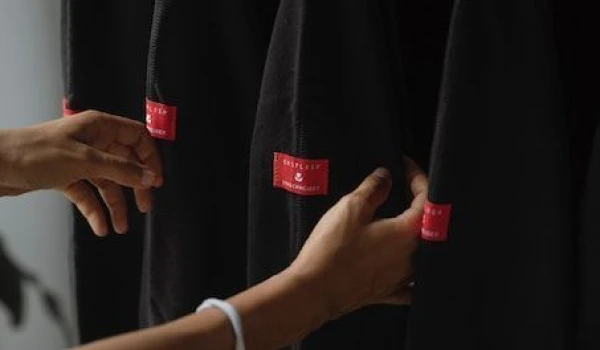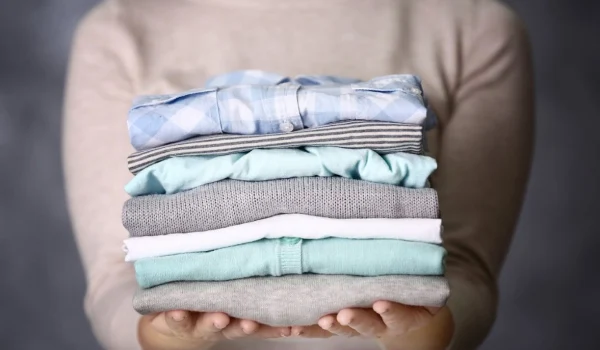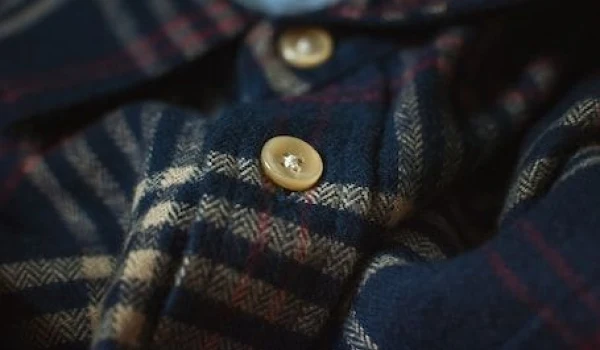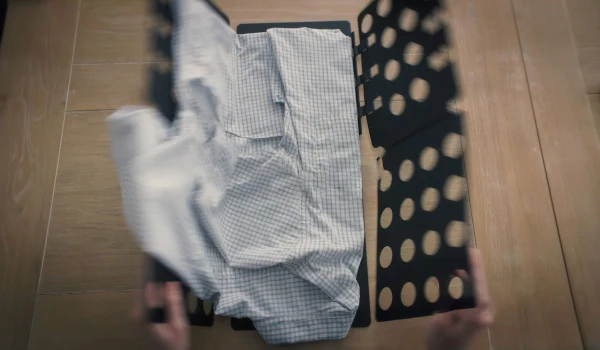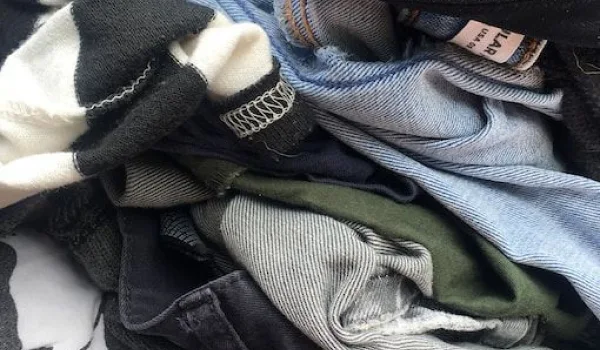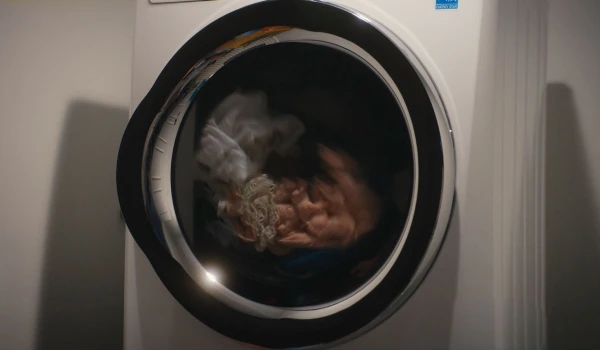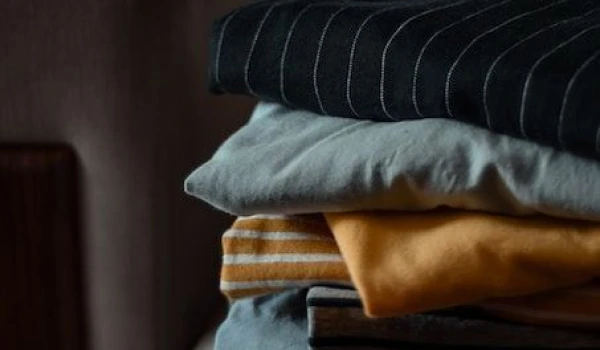Care
Clothing care tips to make your wardrobe last

Gone are the days when your yoga pants were just for yoga class, or running shorts were just for running -- nowadays, people wear their workout clothes just about everywhere. Activewear has evolved from being what you wear to build up a sweat to an every-day essential.
As more and more people are grabbing their yoga pants over their jeans on a daily basis, we wanted to find out the best ways to care for the activewear items that are quickly becoming staples in every closet. James Joun, Rinse’s co-founder, and resident expert, gave us some advice on how to keep activewear in great shape.
“Your activewear stands up to your toughest workouts and all day use, so it can be easy to assume it doesn’t need any special attention when laundry day rolls around,” James stated. “But most athletic gear is made out of synthetic materials that don't mix well with the high heat of a dryer.”
James advised that the best thing you can do for your activewear is to hang dry them, both before and after washing.
Here are 5 reasons why James recommends hang drying your activewear:
Keep them in great shape
Since most activewear is made of moisture-wicking material that keeps you dry, it is likely to be damp after a workout or all day use, which can create an environment for mildew and mold. To avoid this, James advised hanging these items up to dry before placing them in your hamper.
Maintain their fit

The simplicity of wearing your activewear on a daily basis has a lot to do with the consistency of their fit. To ensure your activewear stays looking and fitting like new, you should keep your garments away from the dryer. The high heat of the dryer can warp individual strands of fiber of your activewear and permanently alter their shape, flexibility, and ultimately how they fit.
Avoid damage
Exposing your activewear to the heat and friction of the dryer can be harsh and potentially damaging. The heat wears away on any elastic properties that your garments may contain and weakens the material, which can lead to tears and holes. Hang drying is a great alternative to dry your activewear that avoids the unnecessary wear and tear of the dryer.
Get a better clean

If you’re using your activewear all day, every day, chances are your garments could always use another cleaning. If you can hang your activewear to dry in the sun, you can not only keep it in great shape since it avoids the heat and tumble of the machine dryer but also get a better clean. The sun’s UV rays contain bacteria-killing properties, which can give your activewear an additional cleaning process beyond the washer.
Save money & help the environment
If keeping your activewear in great shape isn’t enough to convince you to hang dry them, saving money and helping the environment may do the trick. Hang drying your activewear, and the rest of your clothes, can help you bring your electrical bill down and reduce the amount of energy you use -- that sounds like a great deal to us!
At Rinse, we provide a Hang Dry service, which is the best service to use to take care of your activewear. We optimize the cleaning process by washing your activewear in cold water and hang drying them in order to maintain their fit and integrity. To try our Hang Dry service schedule a Rinse by visiting rinse.com.
Tips to determine when it's time to let go of your closet clutter along with a helpful guideline for clothing donation.
Some clothes are cherished items, like that sweater you got from your mother or that classic watch your spouse gave you as an anniversary gift. Those are the pieces you keep without question. But other times, there are garments that you may need to say goodbye to.
Here are some tips on when to consider letting go of your closet clutter, along with a helpful guideline for clothing donation.
Your personal style has evolved
While past trends sometimes make a comeback—think the silk and beads of '20s glamor or the flannel shirts of grunge re-imagined—there comes a point when you realize that your personal style has evolved. There's a difference between holding on to a vintage piece (is it truly vintage?) and an outfit that you never wear anymore. One is a timeless investment, while the other is wardrobe clutter. Create some closet space by getting rid of items that don't suit your current aesthetic.
If you haven't worn a piece of clothing for more than a year, it's time for it to go. Consignment stores are a great place to offload pieces that you don't need anymore.
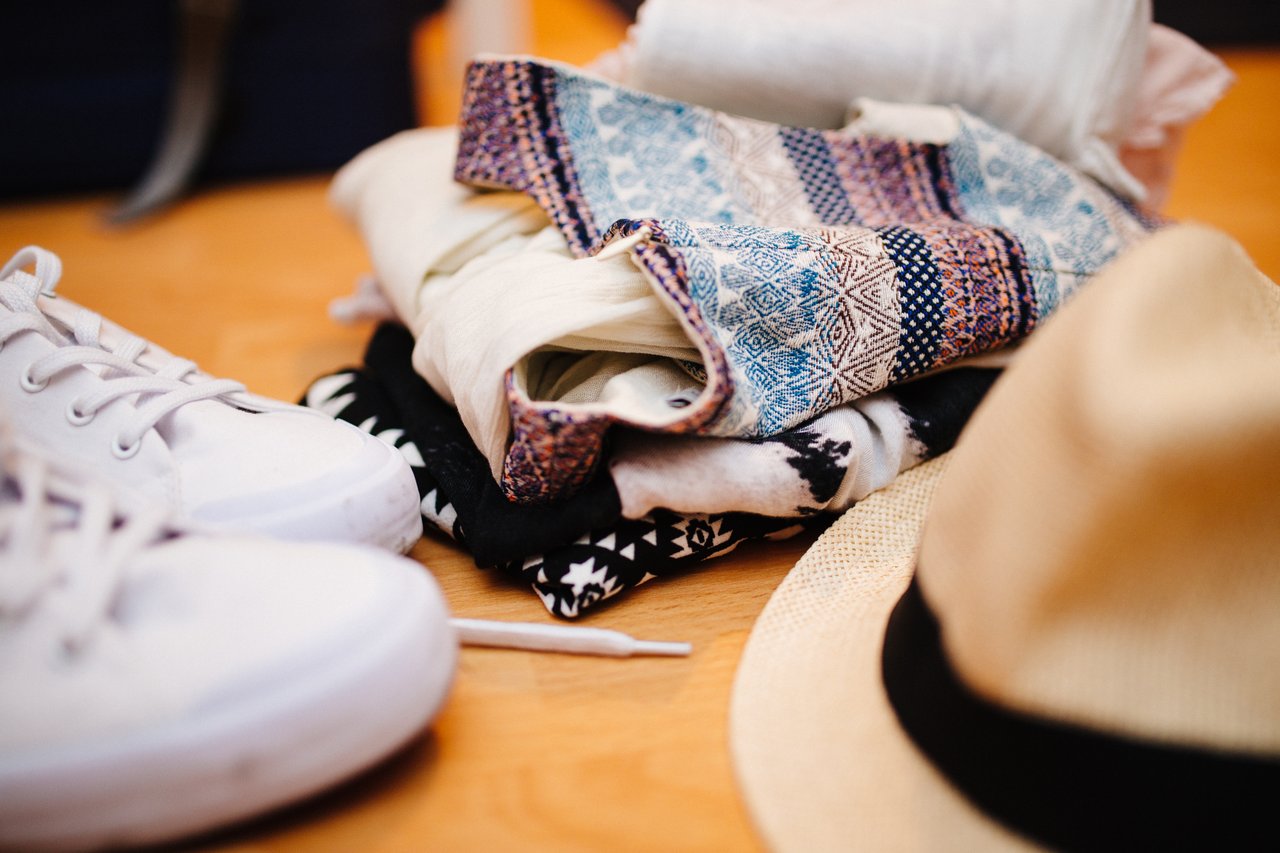
You've physically outgrown your old clothing
Fit is everything. No matter how great an item of clothing is, if it doesn't fit right, it doesn't belong in your closet. If you're holding onto it for sentimental value, ask yourself if you really need that sportswear from high school or your old ballet uniform from your childhood. Or, if something has a particular sentimental value to you, think about ways that you can repurpose it to extend its use—like creating a purse or pillowcase.
If you can't bear to part with a certain piece of clothing, try this intermediary trick: place the item(s) in a garment bag and put it aside for three to four months. If the item doesn't cross your mind during that time, donate it by the end of the season.
You're moving to a new city, or entering a new life stage

Whether you're moving to a new city or starting a new job, these changes will be reflected in your wardrobe. It's not practical to bring every single piece of clothing you own, so make use of this opportunity to declutter. Furthermore, if you're moving from a colder to warmer climate, it's the right time to donate those coats hanging in your closet—Arizona and thick winter jackets don't mix!
Sometimes the transition can be more subtle and it takes a discerning eye to decide what to keep and what to donate. Perhaps you're moving from a corporate culture to a more creative work environment or vice versa. In other cases, you might be switching coasts. Each city has its own distinctive sense of style; rely on your inner circle for a second opinion, or browse through magazines and style blogs to get a sense of what to keep and what to give away to help put your best foot forward as an acclimatized New Yorker or L.A. resident.
Clothing donation etiquette guide

Things to consider:
- Try to clean out your closet at least once a year, or ideally, at the end of every season. Most consignment stores won't accept clothing that's more than two years old, so keep that timeline in mind when selecting pieces to donate.
- While it might be tempting to donate stained clothing you can't seem to get clean, take your garments to a professional dry cleaning service first. They may be able to take care of any persistent stains as well as smells—they might even have clothing donation programs to help you out.
- Consult donation program guidelines when giving your clothing to charity: check for stains, rips or any defects that might make the attire unsuitable for second-hand use.
- If you have more expensive or professional pieces you're looking to donate, such as old suits or dresses, look for donation companies that specifically help outfit people for job interviews.
- As a rule, consider gently used pieces when sending your clothes to charity. You want the new owner to feel good wearing your previously loved items!
Cleaning out your closet doesn't have to be a chore. Make a party out of it and invite your best friends over to help you out. This way, you'll have a streamlined closet with only the best pieces—and someone else will be able to enjoy your unique finds.
Photos: SunKids / Shutterstock.com, Kasia Serbin, Africa Studio / Shutterstock.com, photobyphotoboy / Shutterstock.com, Hannah Morgan

Learn how to use the care labels on your clothes to ensure their longevity!
Preserving your clothing tags may be one of the most important things you can do when it comes to caring for your garments. It's not always as simple as distinguishing between dry or wet wash. Nuances in clothing care such as wash cycle, water temperature, iron or non-iron can be hard to keep track of without the trusty label for recommended care.
Different colors, different care
The first rule of laundry is to check the care label, and the second rule is to always separate your darks and lights.
While most clothing can tolerate warm water, dark or bright fabrics work best with cold water to prevent color transference. The label will state "Do Not Bleach" if the garment can't withstand bleach products or "Non-Chlorine Bleach When Needed" if only certain types of bleach can be used.
At Rinse, we follow these rules for each and every order. Your clothes are properly sorted and expertly cleaned when in our care. If you don’t want to deal with rules one and two yourself, the third rule of laundry is to have someone else take care of your laundry for you. That’s where Rinse comes in! We’ll pick up, expertly clean, and hand-deliver your laundry straight to your door, 7 days a week.
Wet wash or dry clean only
Unless a clothing label reads "Dry Clean Only," the item can most likely be hand washed with an ultra-gentle detergent designed for delicate fabrics.
Special care items such as outerwear, certain textiles such as merino wool, and delicate embellishments or silk fabrics are better left to a trusted dry cleaning service (especially if the label recommends "Professional Dry Clean Only").
Caring for upscale fabrics
More delicate pieces will often have the following instructions: "Machine Wash, Gentle or Delicate" and "Tumble Dry, Low Heat." This means setting your machine to the lowest setting for gentle care at a maximum of 86 degrees Fahrenheit (compared with a fabric like cotton that can withstand 200 degrees). Alternatively, if your dryer does not have a low heat setting, opt to hang dry your item instead. For more refined fabrics such as pure silk, consider using professional laundry services.
For best results: Treat your clothes to a gentle cycle, or hand wash, and always use cold water (below 85 degrees Fahrenheit). To hand wash, simply fill a basin with cold water and add a gentle detergent. Besides investing in a gentle laundry soap for your most treasured pieces, laundry nets are also a fuss-free way to provide an extra layer of protection for washable items.
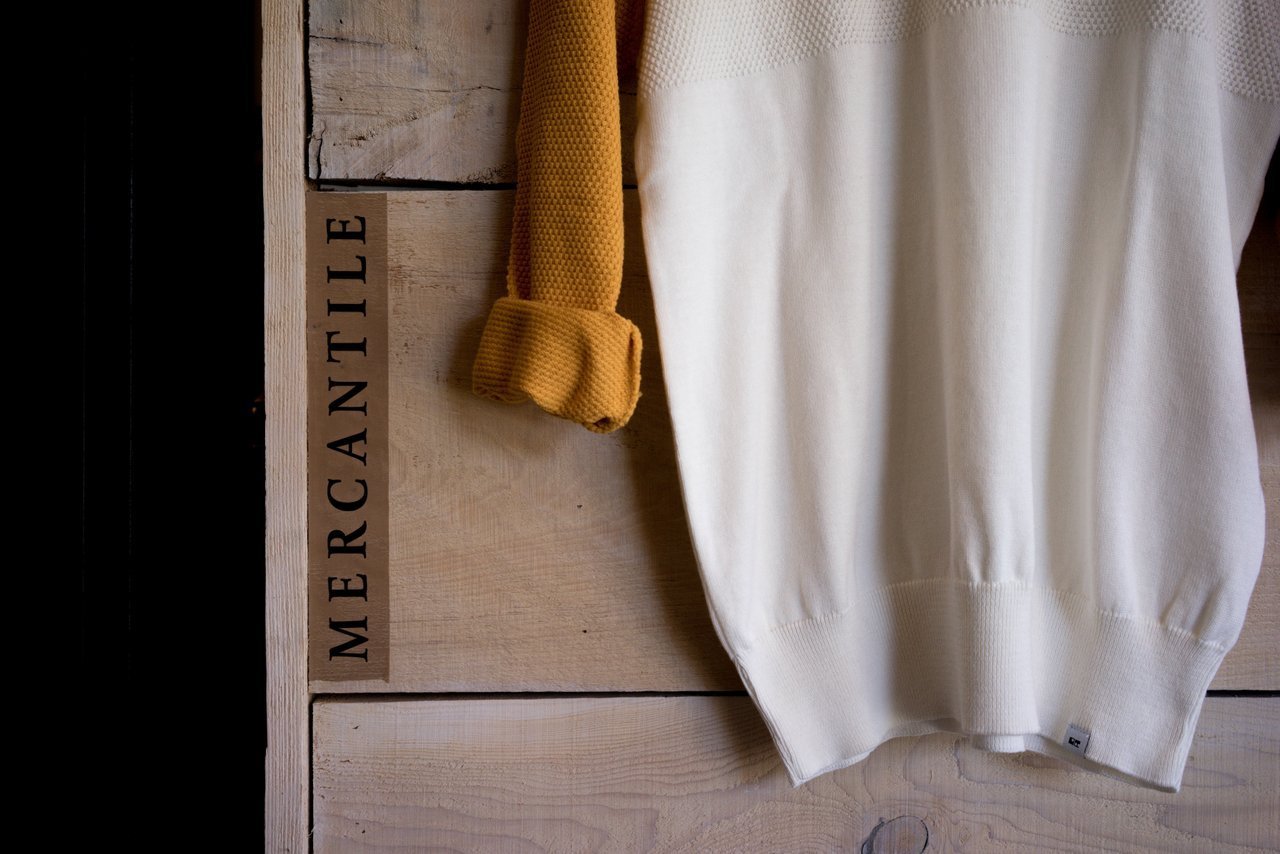
After-care: to tumble dry or not to tumble dry?
Have you ever shrunk your favorite sweater? Most likely you've forgotten to read the fine print: "Do Not Tumble Dry." Be sure to check the label for instructions on how to dry or press your garments. Basic items such as cotton should be safe in the dryer on a medium setting ("Tumble Dry, Normal"). Clothing with sensitive fabrics might have a "Do Not Iron" warning.
For best results: Even though the label might read "Tumble Dry, Gentle,"—remember, the less heat you apply, the better—it doesn't hurt to hang dry your favorite item to avoid potential changes in fit or texture. A trick for maintaining a sweater's shape is to flat dry on a solid surface. In some cases, the label may state "Drip Dry" instead of "Tumble Dry" or "Dry in Shade" if wet clothing should avoid direct sunlight.
Clothing label cheat sheet
Sometimes decoding clothing label instructions can be difficult, but there are a few tricks to understanding common symbols. Bleaching is denoted with a triangle, dry cleaning with a circle, drying with a square (or circle inside a square for tumble dry), washing with a trapezoid bisected by a wavy line, and ironing with a trapezoid bisected by a curved line.
As a general rule for heat instructions, the more dots on the label, the higher the temperature. But consult the breakdown below for specific temperature limits:
Machine Wash
- Normal: Water temperature does not have any heat restrictions
- Cold: Water temperature should not exceed 85 degrees Fahrenheit
- Warm: Water temperature should not exceed 105 degrees Fahrenheit
- Hot: Water temperature should not exceed 120 degrees Fahrenheit
Ironing
- Low: Temperature should not exceed 230 degrees Fahrenheit
- Medium: Temperature should not exceed 300 degrees Fahrenheit
- High: Temperature should not exceed 390 degrees Fahrenheit
When it comes to clothing maintenance, the fine print matters. If you're pressed for time or unsure of specific treatment requirements, consider the array of services offered at a dry cleaner—from Dry Clean, Launder & Press to Hand Wash—to ensure your top pieces are well taken care of.
Photos: Francis Duval, Jeff Sheldon, Clark Street Mercantile, Clark Street Mercantile
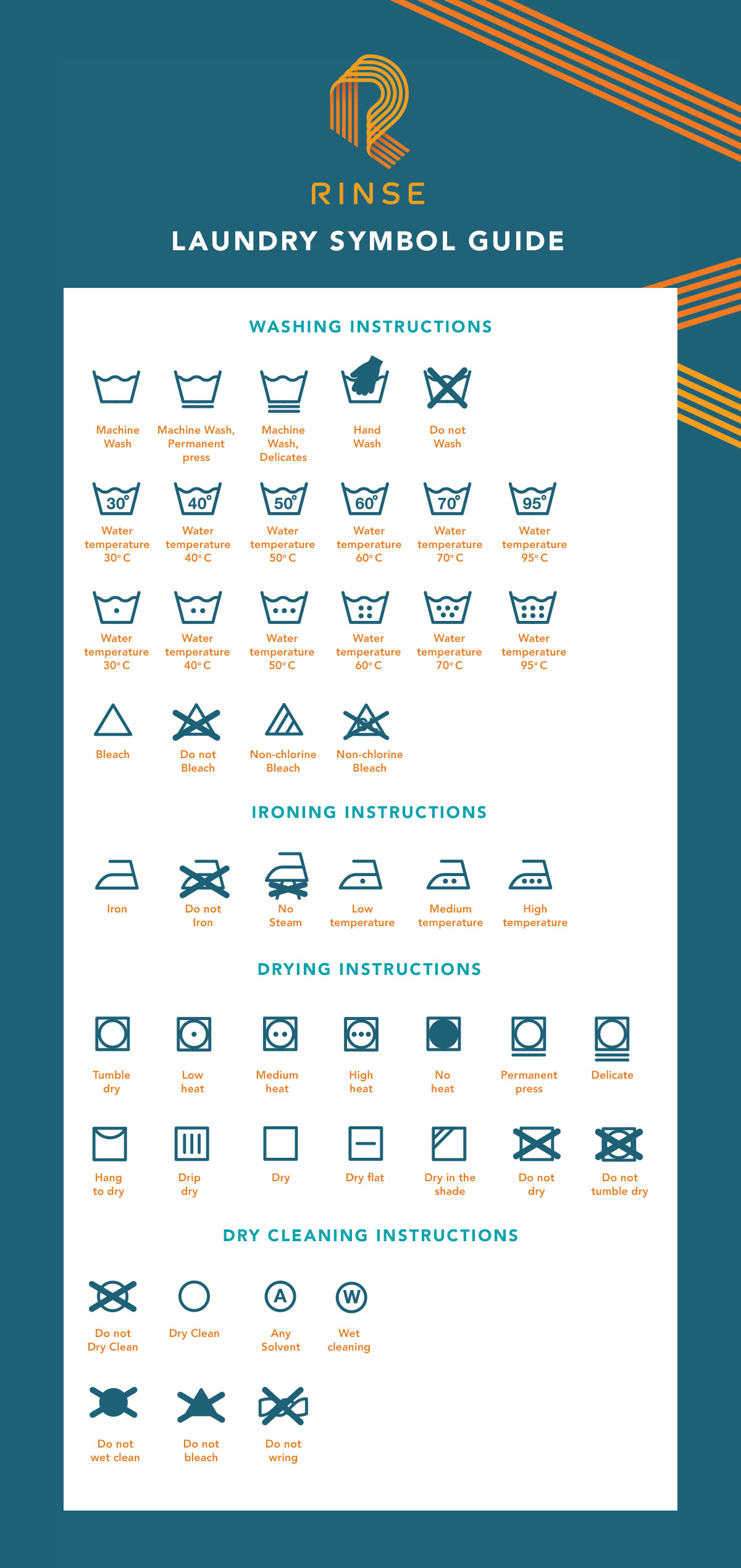

We show you proper techniques you can use to make sure your seaside apparel in good condition.
Finding the right swimwear can be tricky—it needs to be functional and fit in a way that makes you look and feel good. So when you've found a piece you love, it's important to invest in proper care techniques to make sure your seaside ensemble is beach-ready for this season and the next. Here are our tips to clean and preserve your swimsuit so you can focus on nailing that tan.
Cuts, fabrics and embellishments
When it comes to choosing the right cut, you don't have to show off more than what you're comfortable with. The most important factor is finding a swimsuit that covers you in all the right places, which applies to both women's and men's swimwear. Whether you pick a simple one piece or a more elaborate option, any special details (like scalloped edges and tie backs) as well as fabrics will be affected by how you clean and care for your suit.
Choice fabrics include nylon, spandex and lycra, which are all durable and easy to care for post-swim. However, it's important to note that nylon can fade with strong sunlight, while spandex is only comfortable when combined with other materials. Polyester is another less common fabric used in swimwear; it's not as comfortable and elastic as nylon, but it's more chlorine and fade resistant so it will often have a longer lifespan.

Regardless of fabric choice, avoid throwing your swimsuit into the washing machine; even the gentle cycle can damage the fabric, and laundry detergent can fade the color of some swimsuits. Instead, read the label first to decide if it needs to be professionally dry cleaned or hand washed. Take care when hand washing, especially if your swimsuit is embellished with ruffles or rhinestones. A gentle rinse in a basin of cool water should do the trick.
Treating stains

Whether you're going for a dip in the pool or enjoying a game of beach volleyball, you might end up with a few unexpected blemishes on your swimwear.
If you've managed to get sunscreen on your suit, some good old dish soap will take care of most stains before they settle into the fabric. Grab a clean, dry towel and apply pressure to the stain to soak up as much of it as possible. Spilled a drink or let some food dribble onto your suit? Sprinkle some baking soda on the stained area and let it sit for an hour before you wash your swimwear in cool water. A great swimsuit hack is to take it into the shower with you to get rid of chlorine, sand or any other issues, fuss-free. Left untreated, chlorine can dull the color and weaken the elastic of your swimsuit. So be speedy in cleaning your suit after you've left the pool.

Preserving swimwear
Besides choosing the right fabrics and washing your swimwear with care, here are some tips to make your favorite swimsuit last.
- Hand wash with a gentle baby soap immediately—fragrance-free is ideal.
- As tempting as it is to wring your swimsuit, opt to flat dry it instead to maintain the suit's shape.
- Spandex, in particular, can get stretched out with frequent wear so consider alternating various styles to give your swimsuit a break between beach days and pool parties.
By switching up your suits, you'll ensure that each piece can return to its original form and hold its shape better over a longer period of time. When storing your swimsuit, place it in a fabric garment bag to avoid letting any moisture in, and keep the bag in a dry area. Otherwise, you'll be faced with the unpleasant sight and odor of mildew—and no one wants to deal with that hassle.
Taking care of your swimsuit doesn't have to be complicated. With a few simple measures, your favorite piece will stay in tiptop condition for your next dip in the lake or mornings laps in the pool.
Photos: Sergey Moskvitin / Shutterstock.com, David Straight, Artme Verbo, Ed Gregory

Investing in your wardrobe is important. By doing so, you can help reduce clothing waste by wearing items longer and you can perhaps even save extra money by avoiding clothes shopping. However, finding the right clothing care service is not always easy. Learn what to look for when choosing your clothing care provider.
special care instructionsWe spend a lot of time investing in key pieces to build the perfect wardrobe. The same thought and consideration should extend to the care of our clothing. Rather than drop it off at any local cleaner, you want to place it in the care of a service that you trust. Whether you're looking for smarter tech or more transparency, we've outlined some scenarios to help you, the discerning consumer, choose a quality dry cleaner.
When your favorite silk blouse has a stain
It happens. You're enjoying a cup of coffee and you look down to see a small brown spot slowly settling into the sleeve of your favorite silk blouse. Instead of dealing with the stain yourself, you want to entrust it to a quality dry cleaning service. Make sure you prioritize a laundry service that takes your issues seriously; they should ask about your needs and provide detailed treatment tracking for quality control from start to finish. These details might include preemptive emails to consult with you about potentially risky cleaning so you know your favorite pieces are in good, considerate hands.
When you need your outfit cleaned by tomorrow

You've got an important business meeting tomorrow, but you don't have the time to run out during your lunch break to pick up your power outfit from the cleaners. A quality cleaner makes it easy for you to receive your dry cleaning whenever you need it. They'll offer quick service and door-to-door pickup and delivery so quality doesn't have to be compromised for convenience—and you can focus on making a great first impression on your client.
When your jacket requires special treatment
Yes, it needs a little more attention than other items in your wardrobe, but when you put it on, your leather jacket draws the attention of everyone in the room. So when you need to get it cleaned, you turn to a laundry service that's responsive to special care instructions. Look for a dry cleaner who allows for special instructions to be relayed through traceable means, like email, so everyone is held accountable for keeping you looking sharp.
When you want to track your orders closely

When you have a well-worn—and loved—piece of clothing, you'll want to keep a close eye on it. Visit a modern service that features a full range of tech options that make this easier to do. Look for a service that offers an online order history and the ability to communicate via SMS so you can receive up-to-the-minute information about your order.
When you don't want to pay any hidden fees
You're willing to spend more to ensure that your clothing returns to you in mint condition, but of course, that doesn't count hidden costs. Most cleaners are not transparent—they'll upcharge clients, especially for a luxury label or special care fabrics such as cashmere, silk or leather. Look for a service that is upfront about any extra charges (and provides an itemized receipt), so you can walk away with your clothes—and your wallet—intact.
As a savvy consumer, you want to make sure that your apparel will always be freshly pressed. Keep it clean with a company that meets all of your expectations so you can spend less time stressing and more time impressing.
Photos: m0851, Evdokimov Maxim / Shutterstock.com, Adrianna Calvo

It’s always exciting to add a new piece to your wardrobe but once you’ve worn it, you need to know how to wash it. Is it a “Hand Wash” or “Dry Clean Only” item? Does it lay flat or hang to dry? Different fabrics require different types of treatment.
Clothing labels are the first point of reference when it comes to clothing care—the little tag on your favorite sweater provides helpful washing instructions to ensure your cherished item gets the proper care it needs. Let's have a look at a few common fabrics that should be dry cleaned professionally and which ones you can take care of in your own laundry room.
Fabrics that need professional cleaning: silk, velvet, wool, leather and more
![]()
If you've finally scooped up that vintage leather jacket you've been eyeing all season, you'll want to make sure it lasts. For a quick fix to take care of any stains, start by scraping off the residue, but make sure to keep it away from water, which can damage the material. After that, trust it to an experienced dry cleaner for long-term maintenance. The same rules apply for other delicate pieces like your silk scarf. Defer to the professionals when it comes to taking care of fragile fabrics.
Besides silk and leather, other upscale fabrics—including chiffon, velvet, and merino wool—should be brought to a professional cleaning service to preserve their natural luster and form. You'll also want to entrust suits and most professional wear—especially wool pieces—to the care of a professional.
Fabrics that can be washed at home: cotton and knits

Just because an item can be machine washed doesn't mean that you should subject it to a hot soak—heat can cause colors to fade. Cotton can be washed in warm or cool water with regular detergent. Synthetic fabrics such as polyester and nylon are safe to wash in a machine using in warm water on either the delicate or permanent press cycle, but take care when drying these items to avoid permanent wrinkling.
More luxurious pieces such as cashmere blends should always be washed by hand in cold or lukewarm water with gentle laundry soap. Don't wring the fabric as it may ruin the material. Instead, take care to dry flat or use a drying mesh rack to help the clothing keep its shape. If you're pressed for time, place the item in a laundry bag and select the most delicate cycle on your machine to mimic the hand wash process when laundering at home.
If you're ever unsure about your clothes, check the label. Our handy clothing label guide breaks down common symbols and instructions so you can avoid any laundry mishaps.
Or if care label instructions have you feeling overwhelmed, you can leave the cleaning to us. We offer Wash & Fold, Dry Cleaning, and Hang Dry to ensure your clothes are taken care of appropriately. Sign up for free and schedule your first pickup at your earliest convenience.
Care guide for denim: the real deal about at-home care

Contrary to popular belief, denim isn’t the sort of fabric you can put through the ringer—or in this case, the dryer. Despite being a very durable material, proper jean care is actually quite particular. Most jeans should be washed inside-out in cold water and hung to dry, although some high-end denim would even benefit from dry cleaning. And when it comes to raw denim, which means denim in its purest, non-distressed form, the best washing practice is not to wash at all. If you find yourself with a stain, simply wipe it away with a damp cloth, or take it to the experts for extra help.
Care guide for special items: accessories and embellishments

There are certain pieces in your closet that require special attention like that suede fringed dress or straw sun hat. Use a damp cloth to wipe away dirt, dust or sweat stains from your hats, and be sure to keep them in a cool, dry spot rather than out in the sun to avoid color damage. The embellishments on that dress can make it extra difficult to care for. Most sensitive details like fringes and sequins require hand washing in a gentle detergent, while embroidered pieces should be machine washed inside-out and placed in a mesh laundry bag on the delicate cycle.
When in doubt, visit your trusted dry cleaner for proper care of any attire. Most modern services offer a full menu of options to suit all your clothing care needs, but if your neighborhood cleaner doesn't have the resources in-house, they'll likely know about a great specialty cleaning service in town and can outsource your item to ensure it's well-treated.
Photos: Irene Lasus, Matthew Wiebe, Kasia Serbin, Eranicle, Alex Blăjan
Readers also liked:
1.) Your Complete Guide To Caring For Cashmere
Topics
Rinse Drop
We offer pickup and delivery if you can’t be present between 8pm and 10pm.
Our Valet will pick up or deliver your order to your doorstep or concierge, at which point you’ll receive a text with a photo showing where your items were left.
You can enable Rinse Drop on any (or all) of your orders.



